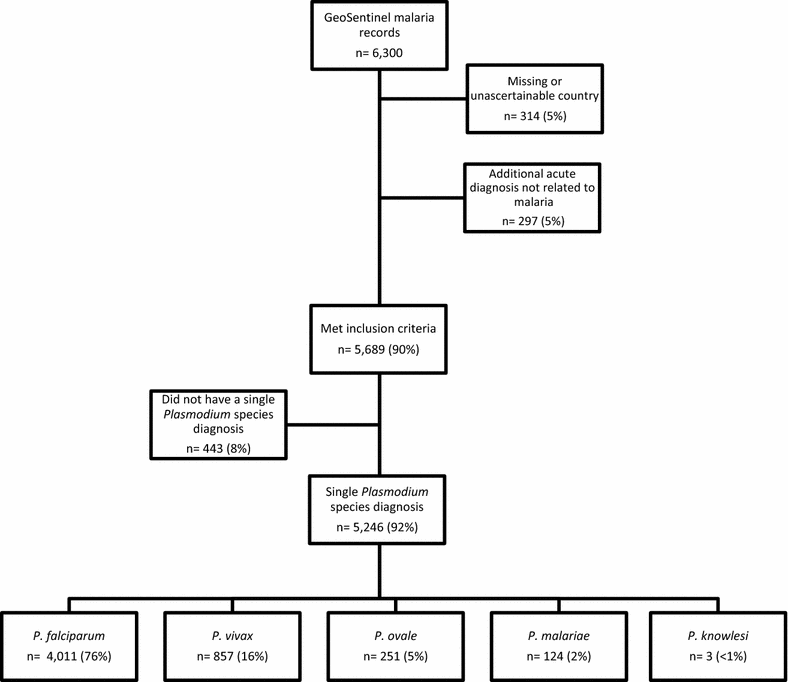Malaria after international travel: a GeoSentinel analysis, 2003-2016
- PMID: 28728595
- PMCID: PMC5520359
- DOI: 10.1186/s12936-017-1936-3
Malaria after international travel: a GeoSentinel analysis, 2003-2016
Abstract
Background: More than 30,000 malaria cases are reported annually among international travellers. Despite improvements in malaria control, malaria continues to threaten travellers due to inaccurate perception of risk and sub-optimal pre-travel preparation.
Methods: Records with a confirmed malaria diagnosis after travel from January 2003 to July 2016 were obtained from GeoSentinel, a global surveillance network of travel and tropical medicine providers that monitors travel-related morbidity. Records were excluded if exposure country was missing or unascertainable or if there was a concomitant acute diagnosis unrelated to malaria. Records were analyzed to describe the demographic and clinical characteristics of international travellers with malaria.
Results: There were 5689 travellers included; 325 were children <18 years. More than half (53%) were visiting friends and relatives (VFRs). Most (83%) were exposed in sub-Saharan Africa. The median trip duration was 32 days (interquartile range 20-75); 53% did not have a pre-travel visit. More than half (62%) were hospitalized; children were hospitalized more frequently than adults (73 and 62%, respectively). Ninety-two per cent had a single Plasmodium species diagnosis, most frequently Plasmodium falciparum (4011; 76%). Travellers with P. falciparum were most frequently VFRs (60%). More than 40% of travellers with a trip duration ≤7 days had Plasmodium vivax. There were 444 (8%) travellers with severe malaria; 31 children had severe malaria. Twelve travellers died.
Conclusion: Malaria remains a serious threat to international travellers. Efforts must focus on preventive strategies aimed on children and VFRs, and chemoprophylaxis access and preventive measure adherence should be emphasized.
Keywords: GeoSentinel; International travel; Malaria; Plasmodium spp.
Figures
References
-
- WHO. World malaria report 2015. Geneva, World Health Organization. http://www.who.int/malaria/publications/world-malaria-report-2015/report.... Accessed 1 Dec 2016.
Publication types
MeSH terms
Grants and funding
LinkOut - more resources
Full Text Sources
Other Literature Sources
Medical
Miscellaneous


